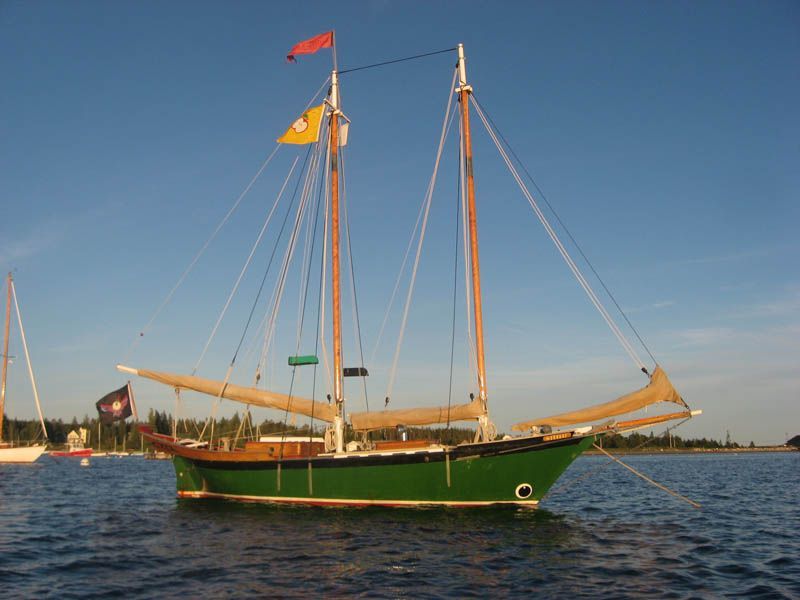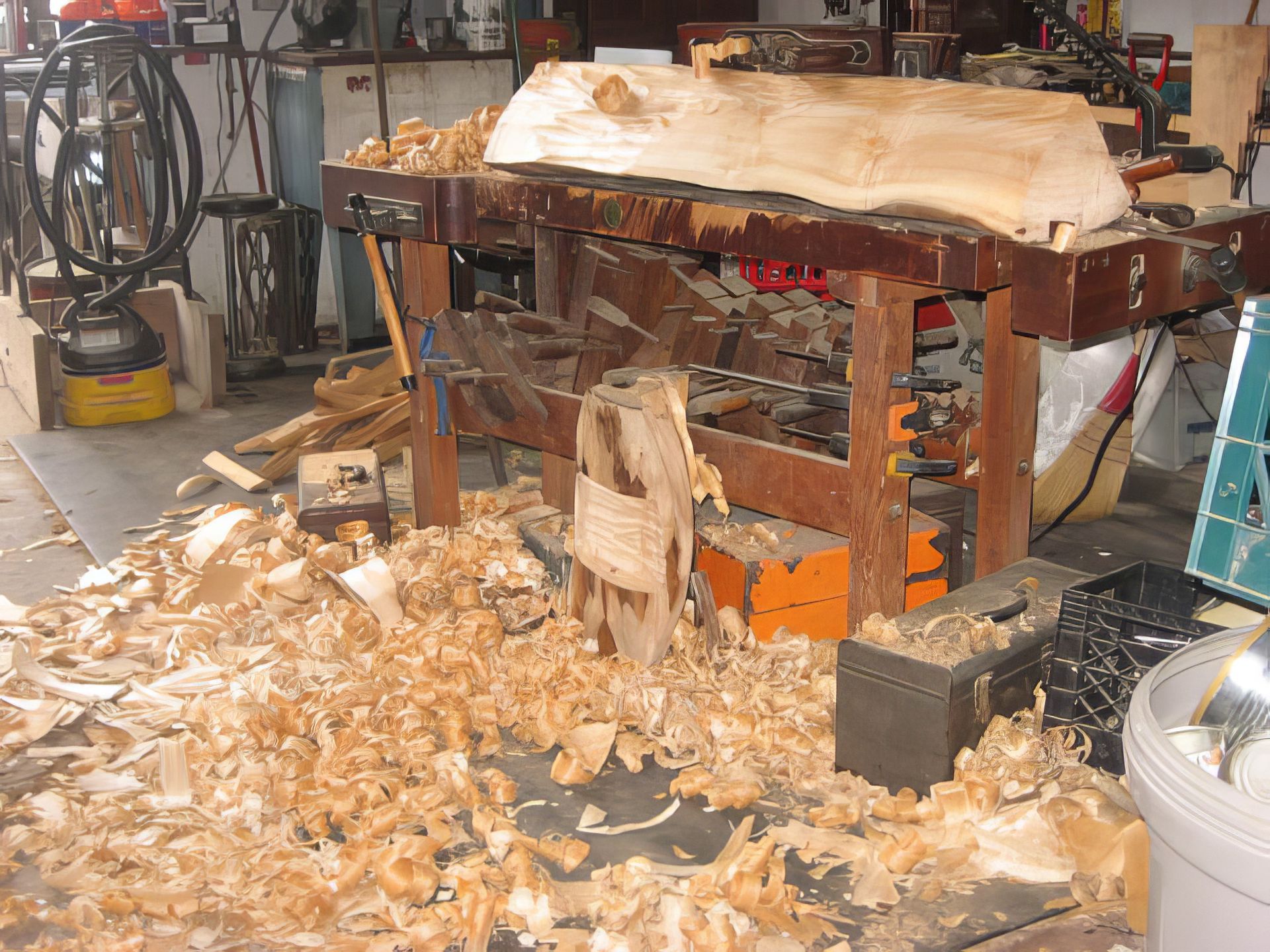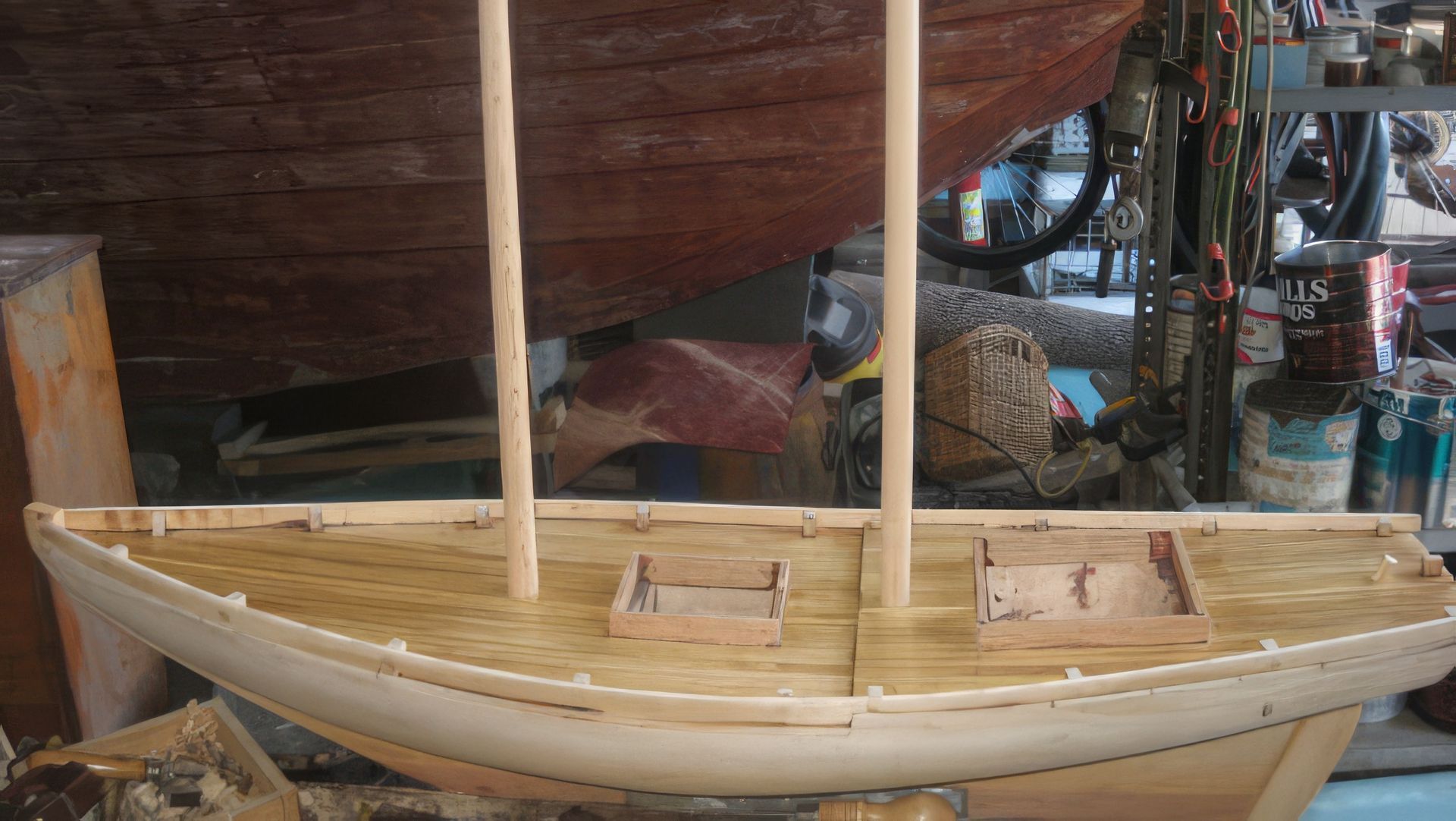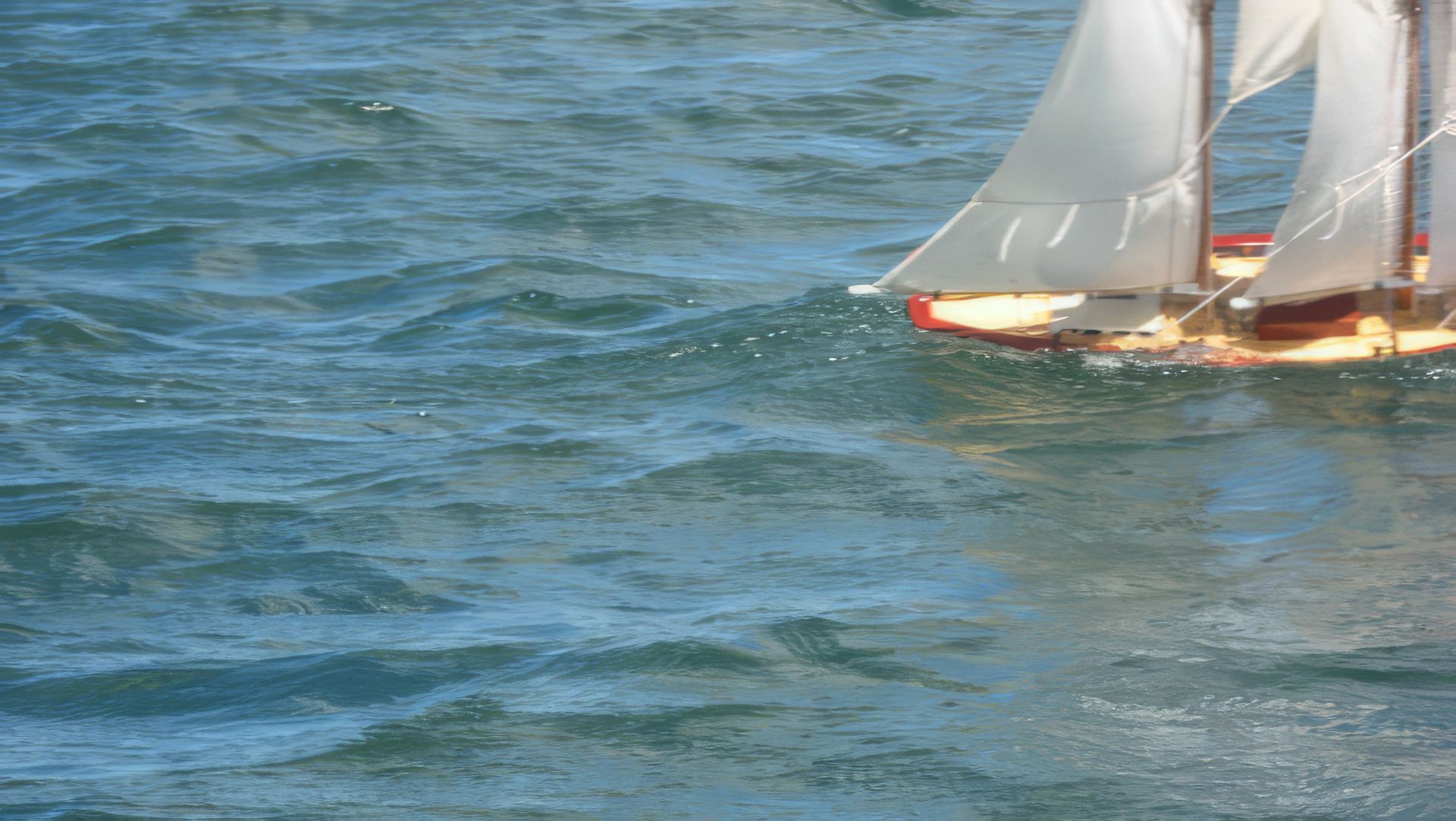Schooner Annie McGee
Annie McGee's keel was laid down in 1950 in Bath, Maine, by Henry Kingsbury from plans published in 1939 by Popular Mechanics. At the time, he was employed by Bath Iron Works and labored on Annie McGee nights and weekends, equipping her with items perloined from various cost-plus contracts the yard enjoyed, including 3500 pounds of iron pig for ballast smuggled out a piece at a time. She was finally completed and launched in 1957. For ten years, Henry sailed Annie McGee around the coast of Maine but never accomplished his goal of sailing her across the Atlantic to France. He died on board in 1967, leaving the schooner to his then-young ward, Rodney Ross.
an equal at sea:
Annie McGee
Rodney Ross operated Annie McGee as a tour schooner in Portland Harbor until the inevitable switch to a larger powered vessel, and he became the last of the old-time steamer captains. Christmas 1985: Captain Yo was walking the Portland waterfront and spying two varnished masts rising above the pilings of Long Wharf. He fell in love with the little ship sitting quietly there in the slip. Her simple beauty was in no way marred by the for sale sign taped to the foregaff. Rodney recognized a fellow wooden boat nut and, deciding Annie McGee had found her next captain, provided some owner financing for the $20,000 price.
In May 1986, Captain Yo took possession and, with his brother Rob, sailed Annie McGee down the coast to Rockland, staying at Small Point and Boothbay on the way. Entering Boothbay on a blustery southerly, it became apparent Annie McGee could not simply be steered to tack, but the second attempt with careful handling of the main sheet brought her around and safely into harbor. The third day saw Annie McGee groping north in a breeze of wind and flood tide through the constricted waters of Mussel Ridge. A nun appeared quickly out of the fog, to port! And she disappeared just as quickly as the wind and tide drove her along. The fog cleared upon Annie McGee's successful arrival in Rockland, and schooner captains from the North End came down to the public landing to welcome Captain Yo to the elite corps of schooner captains. Price: one schooner.
Less than a month later, as Annie McGee waited for a berth assignment from the harbormaster, an easterly ripped through Rockland Harbor, causing her to drag anchor onto the then-Holmes Packing pier. Courageous Coast Guard personnel boarded the leaping vessel as she smashed into the seawall and managed to pull her off to safety. The next day, Captain Yo went on board to inspect the damage, and as he watched, a drip fell through the splintered deck planking to land directly in the gap formed by the two halves of the trailer pigtail installed as a wiring harness, causing a large green spark. Instantaneously, the plastic insulation took fire, and seconds later, flames were licking the overheard. Grabbing a wisely placed dry powder extinguisher, Captain Yo put out the blaze. Lucky to be aboard!
Annie McGee was hauled to North End, and the damage was repaired there on the marine railway. Oddly enough, the damage was centered right in the back of the built-in icebox, where the fresh drip had rotted two frames to the point where a little finger could be pushed into the wood across the grain with little resistance. It was as if the old girl was crying a warning: You aren't going sailing until you fix me!
Captain Havilah Hawkins came down to observe the work. When Captain Yo sighed about not being out sailing on a gorgeous July day, he replied, You can go sailing any time, but boatbuilding is a way to express your creativity. Yo kept that in the forefront of his mind as he sawed, drilled, hammered, and screwed Annie McGee back into shape in that sweltering summer. A month later, with new sheer strakes, clamps, and waterways, Annie McGee was ready for sea again.
Captain Yo sailed her between Rockland and Mount Desert Island for the rest of the year, toward the end of which the mainsail blew out due to years of furling without sail covers. Those early voyages were to be included in the required sea time for a captain's license, which he achieved with flying colors in the spring of 1987. That summer, with a bright new suit of sails made by Gambell and Hunter of Camden, Annie McGee was once again operating as part of the Maine windjammer fleet, carrying delighted passengers on day tours of the southern part of the west branch of Penobscot Bay.
In 1989, after a stint the previous year on Portland's waterfront, when the batten seam deck leaked every time it rained, Annie McGee stayed ashore for a new deck. Resisting suggestions to cover with plywood and glass/resin, Captain Yo rebuilt the deck schooner fashion with straight laid narrow strakes of clear Atlantic white cedar from Rock Lumber in Portage Lake and milled out by A.E. Sampson. It was a laborious procedure; removing the original deck and furniture alone consumed three weeks, and after adding carlins, spreader wedges, hatch coaming, and cabin trunk, Captain Yo discovered a paucity of detail in the literature about strake decking. Between the foundation work and the learning curve about fitting deck edge nibs into the waterways, the new deck was not finished until mid-September.
Another incident of grounding occurred when an unidentified party hacksawed through the top link of Annie McGee's mooring chain, causing her to go onto Sunset Beach, luckily not much of a blow. But the garboard and garboard rabbet were damaged. So, pump running, Captain Yo took Annie McGee to Spruce Head Boatyard for new garboards of Brazilian cedar. During yet another easterly in Rockland Harbor, Annie McGee lost her tailfeathers in a collision with another vessel. With a naked stern, Annie McGee sailed to Spruce Head once more, where Captain Yo applied two enormous mahogany planks for the new tailfeathers that characterize the New England Pinky Schooner. The original rig had been left bare and was rusty, so over the winter, Captain Yo made up a new gang of riggers, splicing steel wire, tarring, parceling, and serving stays and shrouds clipper style. The job included fabricating six new halliard blocks of teak and bronze, as well as all new running rigging of 7/16 instead of 3/8. The extra-diameter line and serving standing rigging give Annie McGee a very nice hand.
On several occasions, Annie McGee sailed to take part in 18th-century nautical reenactments at Fort Edgecomb, Fort William, and Strawberry Banke in Portsmouth, bombarding shore installations and landing troops. One year, Annie McGee engaged the schooner Mollie Hannah, Captain Owen Dorr, in a running fight in Rockland Harbor, during which both vessels tacked repeatedly and offered broadsides to the acclaim of the crews of other vessels at anchor. Annie McGee was on television, appearing in a short documentary on the hobby.
1995 Annie McGee was trucked to the SLACK Factory in Belfast, where covering boards were removed and a dozen steam-bent sister frames were driven down through the deck to the keel to strengthen the old girl's bilges. Waterways replaced, she was back in the waters of Belfast Harbor on September 28 and enjoyed a beautiful, if abbreviated, cruising season.
Belfast in the 1990s was not exactly a tourist mecca, so Captain Yo brought her down to Mount Desert Island, where she offered day cruises to the many visitors to Acadia National Park into the new century. However, with the changing economy in 2008, the tour business was under stress, with more boats and fewer passengers. Annie McGee hung on, but the happy times were over. People still enjoyed sailing Annie McGee, but the easy money was no longer there. In 2010, Annie McGee stayed ashore in a garage on the Quietside, giving her aging captain a much-needed break to focus on smaller vessels to provide some revenue.
After another winter's worth of repairs, Annie McGee launched again in mid-July 2016 in time to join the Maine Windjammer fleet for a schooner parade to commemorate the Acadia National Park centennial. The fleet came together early in the afternoon, recreating for the first time in more than a century the impressive sight of multiple schooners in the narrow waters of Somes Sound. The event provided an appropriate showcase for Annie McGee to show off her new suit of traditionally styled sails by Grant Gambell. No longer operated commercially, Annie McGee nevertheless continues to take delighted passengers on day trips along the beautiful coast of Maine.
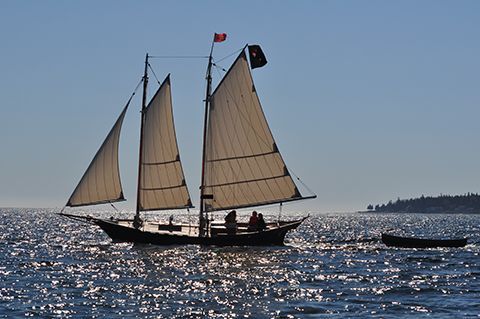
What is a Performance Model?
The performance model is a blend of toy boat and scale model, designed to perform in real water, whether in a bath, pool, pond, or, for the serious enthusiast, at sea. These models are carved from solid wood to capture the look of traditional types in a miniature vessel that floats to its lines, has stability, and holds its course, whether representing a skiff in a 6" model or a topmast schooner four feet long. Additionally, the performance model is built to boatbuilding standards, rugged enough to be loaded into a vehicle, and has a simple yet robust rig for ease of handling. The models are finished with boat paint and varnish for the best protection from the elements.
One Piece Designs
One-piece models are unbreakable, unsinkable miniature boats depicting classic, traditional, and modern types. These vessels are hand-carved, painted with real boat paint, and rigged with natural fibers. They may be used for static display in the home or office or action water play at the pool or beach. Any wear and tear is easily repaired with sandpaper and new paint.
Sailing Models
Sailing models are the most sophisticated performance models. Designed to perform in actual conditions, these models are hand-carved, decked, and painted, rigged with natural fibers, and have handmade sails. They are beautiful models to see and exciting to watch as they heel to the breeze and climb to meet each wave, just like the real or vanished vessels they depict. Handling the sailing models is a true test of the miniature sailor's small boat seamanship, as wind and wave, shore, and other vessels make an interesting challenge of catching a fast-sailing model. Action photography is the finishing touch, allowing the sport of model sailing to be enjoyed by anyone, anywhere.
Naval Vessels
Our naval vessels at Flaming Fish Performance Models encapsulate maritime history in intricately detailed replicas. From iconic WWII convoy escorts to majestic 19th-century barquentines, each model transports enthusiasts to a bygone era. These miniature marvels offer a tangible connection to maritime heritage, making them prized collectibles. Immerse yourself in the allure of naval history, explore our fleet, and embark on a captivating voyage through time. Contact us today to get started on your naval journey!
Swimming Models
Our swimming models at Flaming Fish Performance Models redefine maritime play, offering meticulously crafted replicas like skiffs, catamarans, and tugs. These unsinkable, hand-carved wonders in local cedar or pine provide endless aquatic enjoyment for kids and adults alike, introducing a love for seamanship. Immerse yourself in the joy of miniature boat play—dive into our collection today. Contact us to embark on your aquatic adventure!
On The Ways
At Flaming Fish Performance Models, innovation sails forward with models currently under construction. From modern sailing yachts to historical replicas, our skilled artisans meticulously bring each creation to life. Witness the craftsmanship unfold and secure your spot to own these upcoming masterpieces. Be part of the maritime legacy—contact us today to reserve your exclusive model!

